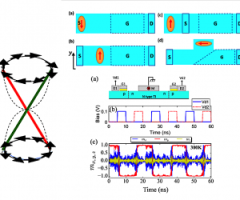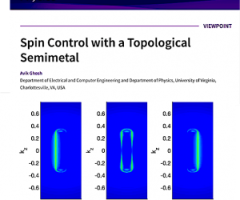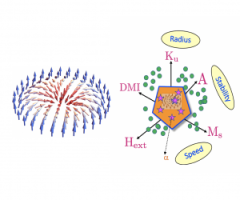Quantum Materials
The 2016 Nobel prize in physics was awarded for the development of topological concepts in condensed matte physics. A lot of this helps us discover new quantum materials, and classify their electronic states systematically. However, what can be a practical use for these concepts, especially from a device perspective? The conventional argument is enhanced mobility - after all, topological properties that limit backscattering increases their ON current. However, for most electronic switches, the challenge is the OFF current, which is exponentially sensitive to transmission, as opposed to ON current. We argue that topology, specifically how relevant degrees of freedom wind around the Fermi surface (spins, pseudospins, magnetization) determines the OFF current across tunnel barriers as well, due to added conservation rules enforced by symmetry.
Take a look at the following classes of materials, and their winding indices. Much like topology distinguishes shape differences between a donut and a bun, the rate of winding of the arrows here separates the materials into different indices or Chern numbers.
In short, quantum topology controls transport properties (lifetime, mobility, barrier transmission) across barriers, because of the constraints imposed by conservation of energy, momentum, and Chern number. Topology depends on symmetries inherent in the system. Barriers and symmetries can be gated. We posit therefore that topological properties allow us to realize unconventional <i>classical computing paradigms</i> using quantum properties.
-

Graphene transistors using Dirac fermion 'optics'
The pseudospin structure of graphene's dimer orbitals causes electrons to collimate across a P-N junction, the core of any electronic switch The resulting unconventional electron-optics can be exploited to build a Klein tunnel transistor that creates a gate tunable transmission gap in bulk...
-

Switching magnets using Topological Insulators
A gate tunable spin Hall device
Spin-momentum locking at the surface of a topological insulator like Bi2Se3 or SmB6 means that PN junction leads to a highly spin polarized transmission, and large charge-spin conversion in reflection. The build-up of spins can be used to torque a magnet with a gate tunable spin Hall...
-

Spintronics with Topological Semi-metals
This will take a Weyl
The surface states of a Weyl Semi-metal like TaAs have broken Fermi arcs that connect through their bulk Dirac point. Their spin textures manifest through local and non-local spin voltage measurements. We are trying to understand how their topological Chern numbers influence tunneling...
-

Ultrasmall Skyrmions
Physics of size, speed and lifetime
Skyrmions are chiral vortex like structures in thin magnetic films that can be as small as tens of nanometers and driven at high speeds around a few hundred meters per second with modest currrents. We study the fundamental physics of their size-speed-stability relation, ways to drive...